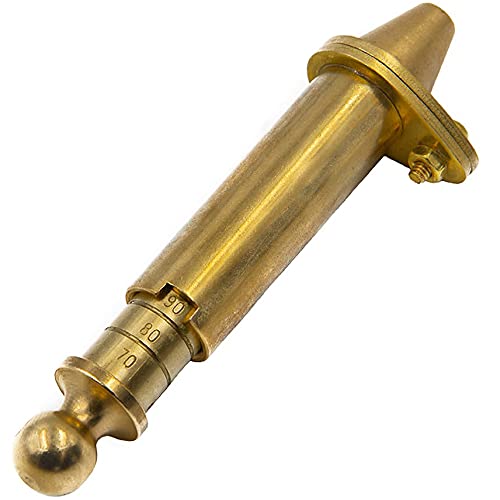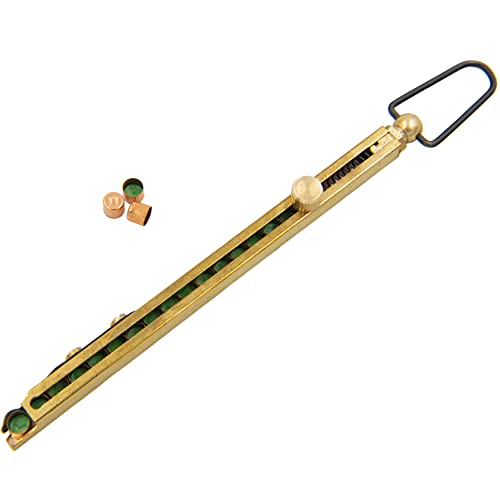-
Friends, our 2nd Amendment rights are always under attack and the NRA has been a constant for decades in helping fight that fight.
We have partnered with the NRA to offer you a discount on membership and Muzzleloading Forum gets a small percentage too of each membership, so you are supporting both the NRA and us.
Use this link to sign up please; https://membership.nra.org/recruiters/join/XR045103
You are using an out of date browser. It may not display this or other websites correctly.
You should upgrade or use an alternative browser.
You should upgrade or use an alternative browser.
L&C Soap Tanning
- Thread starter Haggis
- Start date

Help Support Muzzleloading Forum:
This site may earn a commission from merchant affiliate
links, including eBay, Amazon, and others.
My Grandma used to make lye soap. I'm sure that can tan and remove the hair from a hide. Certainly your skin would need to become leather to protect itself from prolonged use.
Soap used to be animal fats poured through wood ashes, and then boiled down to a solid form.
Soap used to be animal fats poured through wood ashes, and then boiled down to a solid form.
Lewis mentions castile soap later in the journals so they had that type of soap, but were they seemingly in the habit of making soap purposefully for the tanning of hides?
Why didn't they just take this?
http://retail.farmsoap.com/Merchant2/merchant.mv?Screen=PROD&Store_Code=HVRS&Product_Code=1270-00&Category_Code=west
Commercial soapmaking in the American colonies began in 1608 with the arrival of several soapmakers on the second ship from England to reach Jamestown, VA. However, for many years, soapmaking stayed essentially a household chore. Eventually, professional soapmakers began regularly collecting waste fats from households, in exchange for some soap.
A major step toward large-scale commercial soapmaking occurred in 1791 when a French chemist, Nicholas Leblanc, patented a process for making soda ash, or sodium carbonate, from common salt. Soda ash is the alkali obtained from ashes that combines with fat to form soap. The Leblanc process yielded quantities of good quality, inexpensive soda ash.
As for Castile Soap, I looked at their supply log, they only took a 12 lb. Pkg. with them to wash 30 men...
Rocky Johnson
45 Cal.
- Joined
- Nov 5, 2003
- Messages
- 658
- Reaction score
- 1
In the Michigan history magazine,they told about people gathering ashes to sell to soap makers. Burned the trees just for ash in some cases but mostly to clear the land. Rocky /ubbthreads/images/graemlins/wink.gif
Guest
Haggis, you've got a prime example of the "history police" running their mouths with their brain in neutral. You have documentation of soap used in the tanning process in place of brains. Brains were used due to the high fat content of the brain matter. Soap was produced fron rendered fat. It seems common knowledge of the time that one could be used in place of the other.
I'm a historian, but it really chaps my butt when the "History police" get on an ego trip and figure they already know all there is to know on a subject. If they don't see something written in a quarterly journal of some historical society, or spoken by their favorite "big name" writer it just can't be the truth.
You can rediscover history just as well as any Phd. Most of their published work is stolen from pitiful grad students and published after the kids graduate anyway. I know, I've had them take national credit for work I turned in.
By the way, I'd like to have that soap process. You willing to share the secret?
I'm a historian, but it really chaps my butt when the "History police" get on an ego trip and figure they already know all there is to know on a subject. If they don't see something written in a quarterly journal of some historical society, or spoken by their favorite "big name" writer it just can't be the truth.
You can rediscover history just as well as any Phd. Most of their published work is stolen from pitiful grad students and published after the kids graduate anyway. I know, I've had them take national credit for work I turned in.
By the way, I'd like to have that soap process. You willing to share the secret?

$44.99
$53.61
Traditions Performance Firearms Muzzleloader Flintlock Shooter’s Kit
Al's Sporting Goods

$15.99
Muzzle-Loaders Wooden Black Powder Muzzleloader Bullet and Sabot Starter - 6 Jags
IX Properties
Soap Tanning Method
1. Buck: Soak the hide in mixture of water and lime, lye, or hardwood ashes to get the hair to slip. Then scrape off the hair, the grain, and flesh clean on a beam.
2. Wet Scrape: Throw the fresh hide straight into a bucking solution until the hair and grain slip then beam off: the hair, grain, flesh, fat, and membrane. Once the hide is scraped clean, put the hide into the soap solution, and leave it for 3 or 4 days, stirring it a few times a day if possible.
After the initial soaking, take the hide out and rinse it, then pull it and stretch it until dry and soft. If it
1. Buck: Soak the hide in mixture of water and lime, lye, or hardwood ashes to get the hair to slip. Then scrape off the hair, the grain, and flesh clean on a beam.
2. Wet Scrape: Throw the fresh hide straight into a bucking solution until the hair and grain slip then beam off: the hair, grain, flesh, fat, and membrane. Once the hide is scraped clean, put the hide into the soap solution, and leave it for 3 or 4 days, stirring it a few times a day if possible.
After the initial soaking, take the hide out and rinse it, then pull it and stretch it until dry and soft. If it
I had to go back and re-read that entry. At the time L&C were traveling pretty quickly and took hides, when they could to be worked later, when there was time. They probably didn't harvest the brains of the animal to carry with them because they would be difficult to keep any length of time (all animals have enough brains to tan their own hide). I doubt they intended to make saop, only to use the ashes to slip the hair.
Similar threads
- Locked
- Replies
- 4
- Views
- 455
- Replies
- 3
- Views
- 281


















